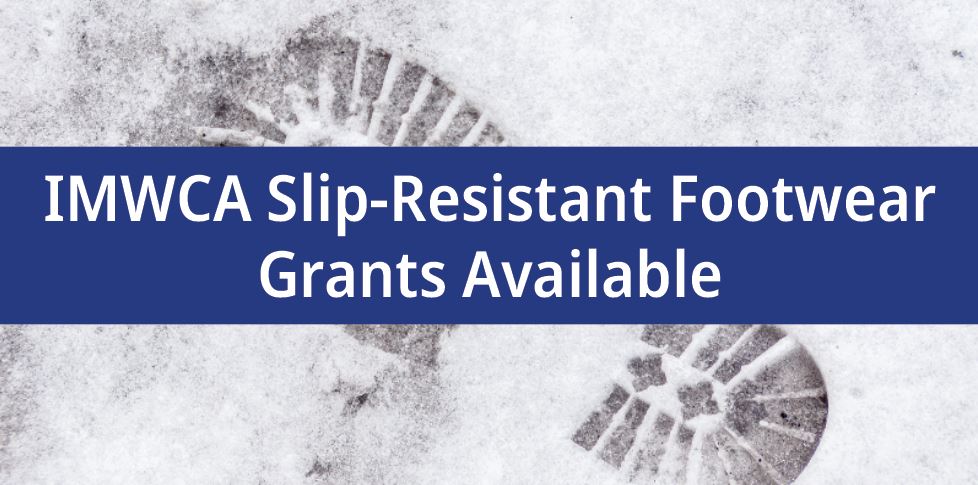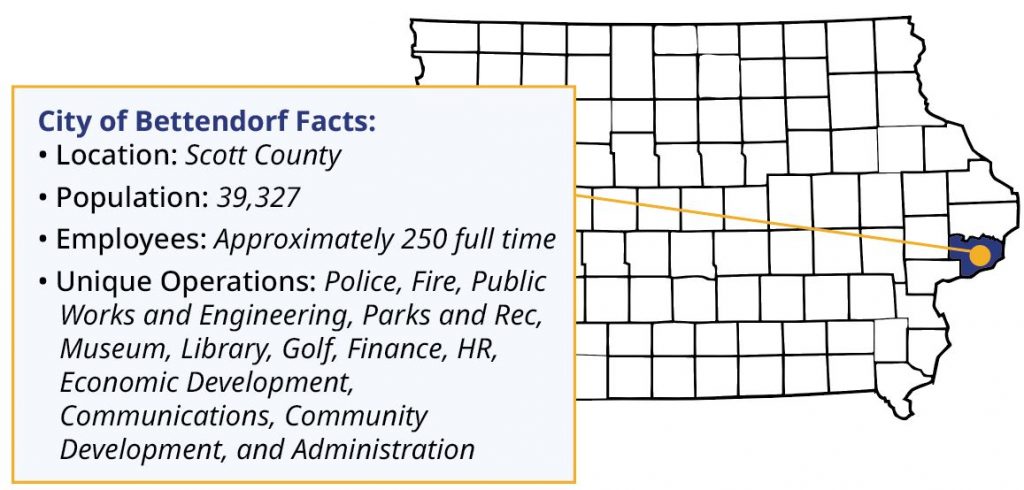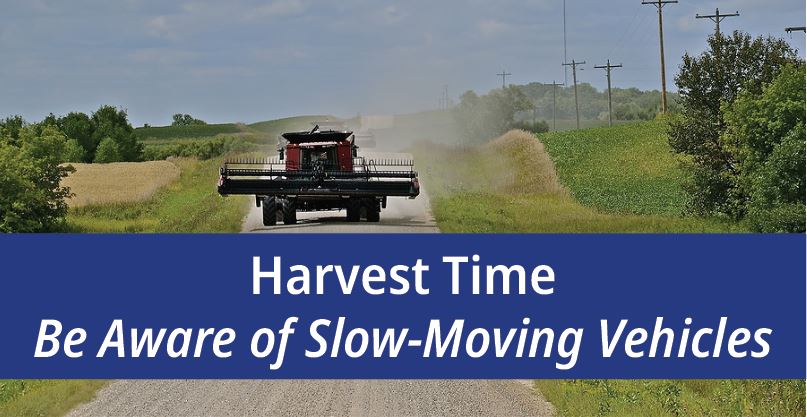
With the arrival of fall, now is the time to start thinking about your strategy to prevent winter-related slips and falls. Besides developing cleaning and salting strategies for sidewalks and parking lots, there are a few other things that can be done as well.
One item to consider is providing slip-resistant footwear for all employees to wear. Members who have followed this practice have substantially reduced, if not eliminated, employees’ injuries from falls. IMWCA has offered an Implementation Grant to members for the last 5 years to help cover the costs of footwear. The grant is capped at $10,000.
If a member applies for the grant and is awarded the following action steps are required:
- Adopt a model slip and fall prevention policy that can be found on the IMWCA website.
- Hold slip and fall prevention training in October and late March and submit documentation of the training upon request.
Member Highlight: Bettendorf

Kathleen Richlen, Human Resources Director provided some insight into what the city has been doing to develop and maintain its safety culture.
What is your city doing to provide a safe workplace?
The City uses numerous techniques for workplace safety, with the core of our safety culture being communication. Whether this communication occurs with written documentation in the form of policies and procedures or verbally during safety talks and discussions, the City strives for openness. In addition, safety-related email communication is distributed at least weekly to staff. Staff are also provided with appropriate PPE, safety gear and equipment, as required by external regulations and internal best practices. Training is also offered and required for staff routinely. This training is either hands-on, classroom, computer-based or a combination. Biannually, the City also offers training in a classroom setting that discusses a variety of safety topics. In sum, the City’s safety portfolio includes policies, procedures, electronic/verbal communication, PPE, equipment, and training.
Do you have a Designated Provider and a Return-To-Work policy?
Yes, the City has a Designated Provider. The City also has a Return-to-Work Policy which is provided to every new hire. This policy pertains to temporary, light-duty assignments.
Please describe your safety committee structure. Who is on the committee, how often do you meet and what are the short-term goals of the committee?
The Safety Committee meets monthly and is comprised of managers, supervisors, and front-line staff across the City. In addition, third-party consultants and safety-related partners are part of the committee. The short-term goals are reviewing accident and injury incidents to understand root causes and then determining the best course of action to reduce that occurrence in the future. The Committee also discusses the following: training, policies, programs, grant opportunities, and safety trends.
What other proactive safety steps do you practice?
Annually, the City completes a safety audit of city buildings. City staff work with partnered safety experts to ensure our facilities are up to regulatory standards. The audit strives to identify issues or defects while also proactively reducing staff’s exposure to workplace risks and hazards. The risks and hazards that are identified during the audit are collected in a report and provided to the Public Works Department and Maintenance Manager for evaluation and resolution. When issues are not able to be immediately resolved, hazard and administrative controls are put in place to decrease risk.
What words of wisdom do you have for other members of IMWCA to help them develop their safety culture.
Being a leader for workplace safety does necessarily equate to rank or title. Recognition of this starts with the Mayor, City Council, and City Manager who empower and encourage City staff to be aware of workplace surroundings and recommend safety improvements. If any employee can recognize workplace hazards and influence positive change this will further develop a healthy workplace safety culture. Finally, management’s ability to recognize and positively reinforce safety efforts is important to promoting a team-orientated safety culture.
What current issues is the committee working on now?
The Committee is working on a safety incentive program. This is another example of a proactive initiative by our committee to ensure the workplace is safe and staff can partake in creating our safety culture. The program will encourage office and field staff to promote and engage in safety activities. Staff will be recognized and rewarded for their efforts as well.

Harvesting in Iowa is in full swing. This is a hectic time for farmers and drivers alike. Slow-moving agricultural vehicles will be sharing the roads with the normal traffic loads. These situations can create serious vehicular collisions, injuries and even fatalities. To prevent collisions, keep the following tips in mind:
- Plan Accordingly: If you will be traveling on roads that are also used during harvest, give yourself extra travel time. By doing so, you will not feel rushed. Also, keep in mind that harvest related vehicles may operate around the clock. The further you travel = increased time.
- Stay Alert: While most agricultural equipment may be easy to see, that is not always the case. Some equipment may be harder to see so it is important to stay alert and be prepared to slow down. Equipment may suddenly slow to turn or enter the roadway from a field drive.
- Maintain a Safe Following Distance: Slow down and give yourself more following distance. This will actually help you identify when it is safe to pass. Following too close actually obstructs your forward view. It also gives you less reaction time to “peek to pass” which may result in you colliding with an oncoming vehicle.
- Remain Patient: Being stuck behind a slow-moving vehicle can be very frustrating. This can even make you angry. This can lead to making very poor decisions when it comes to following and passing. Although it is difficult, try and relax and accept the situation. The safest thing you can do is to remain calm and patient.
- Pass Safely: When passing a slow-moving vehicle, make sure you are in a safe area to do so. Do not try passing in “No Passing” zones. Try and identify if it is just one slow-moving vehicle or if there are more ahead. This will affect how much distance you will need to complete the pass. If the vehicle being passed is wide, ensure that you have enough road width to pass. Sometimes the operator of the slow-moving vehicle may move over and/or wave you around. However, always check for yourself that it is safe to pass. Use your turn signals and after passing give the vehicle plenty of space before returning to the initial lane of travel.
- Don’t Pass in a Pack: Often a series of vehicles will blindly follow a lead vehicle as it passes a slow-moving vehicle. This is a very dangerous thing to do. Please remember, the lead driver made the decision to pass based on their assessment for their own vehicle – not anyone else. Hopefully, their decision was a safe one. Regardless it was only for themselves.
Additional Resources:
- Driving Around Farm Equipment – Woodbury County
- Sharing Roads with Fall Farm Equipment – Marshall County Sheriff




